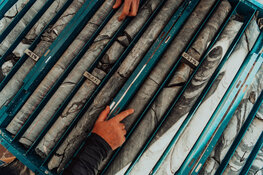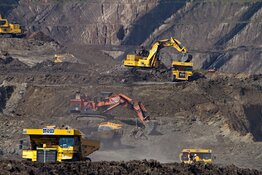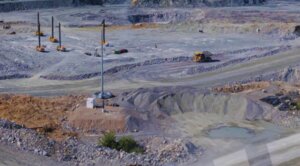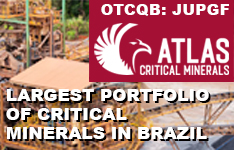The Gold Report: The Hallgarten website says, "Over the years, the team has successfully picked trends using our macroeconomic underpinnings to guide investors through the treacherous waters of the markets." Could you give us a couple of trends that retail investors could take advantage of?
Chris Ecclestone: The chief trend I see is a change in the nature of this gold market recovery. Production is going to be king. In 2009, cash was king after the economic crash. Now it's production. If a company doesn't have a preliminary economic assessment (PEA), it is going to wallow for a fair while. The main focus is going to be if these companies can become real miners or if they are just going to be forever out there with their project generator models.
"Production is going to be king."
There are a lot more companies on the "For Sale" side then there are companies out there to buy them. A lot of them are going to be left standing alone at the wall. The only companies that are going to get the attention of majors are those that are along the continuum between PEA and production.
If they're not, who's really interested in exploration at the moment? There's no shortage of producers that have been pretty well proved up so that we don't need to have yet another 80,000 ounce (oz) resource in the mountains of Peru.
TGR: The price of gold got very close to $1,800/oz early in October, but has slipped to the low $1,700/oz range since then. Is the effect of quantitative easing (QE) wearing off?
CE: QE didn't produce the inflation that it was supposed to. QE2 was nearly three years ago and there's only a little bit of inflation out there. I don't believe the official numbers, but it's certainly not the amount of inflation that the goldbugs would require to push the gold price to $3,000/oz. QE2 didn't do it, why should QE3 do it?
TGR: Usually gold shows some strength in the fourth quarter regardless if there's QE or not. Why is it showing weakness in a traditionally strong quarter even with QE?
CE: Part of the problem is that Europe has not blown up on schedule. A lot of goldbugs were looking for the perfect storm if QE3 happened at the same time that one or more European countries went over Niagara Falls, but it just hasn't happened. Even now, the Greek stock market is up 65% off its lows. Quite clearly people are more positive about what's likely to happen there. If it can pull through, then it looks less likely that we're going to be having the chaotic collapse that goldbugs have been looking for.
TGR: Your thesis sounds very intriguing: Since there are few majors and a lot of projects, only the prettiest girls are going to the dance, so to speak. With literally hundreds of projects between PEA and production, how do you narrow that field down?
CE: That's up to the investor. They have to assess which areas they are most comfortable with. There was recently a coup in Mali. Peru's government is considering reforms after anti-mining protests. The Democratic Republic of Congo (DRC) increased taxes under its mining code. Yet, there are great companies and great new zones. It's up to investors to know what they personally feel most comfortable with. Some of these countries are in the dog house, but these things can happen anywhere and investors have to assess their own tolerance for complications. Any miner in Venezuela can unexpectedly be run out of the country. It can be a total bust. You never know.
TGR: For example, things can vary drastically depending on which province you're in inside Argentina.
CE: Each province in Argentina has its own mining code. There's not a national mining policy. Yet, even provinces that seem to be anti-mining, like La Rioja, can end up on the other side being very pro-mining. The provinces in Argentina that have been consistently pro-mining for a few decades now are really the areas that investors are concentrating on. The biggest deals in Argentina largely have been done in the Santa Cruz province, which is pro-mining.
TGR: A number of very large players are in Santa Cruz province: Goldcorp Inc. (G:TSX; GG:NYSE), AngloGold Ashanti Ltd. (AU:NYSE; ANG:JSE; AGG:ASX; AGD:LSE), Hochschild Mining Plc (HOC:LSE) and Yamana Gold Inc. (YRI:TSX; AUY:NYSE; YAU:LSE). How did you become a specialist in Argentina?
CE: The Argentine market opened up to the investment world in 1991. I was on the ground there. That year I founded the equity research firm Buenos Aires Trust Co., which I headed up until 2001.
TGR: What are you long on in Argentina?
CE: Patagonia Gold Plc (PAT:TSX; PGD:LSE) is very interesting at the moment. It expects to get approval for its Lomada de Leiva mine in the fourth quarter. It will start construction on the heap leach after it gets approval and could start production next year.
TGR: Patagonia has province-owned mining company Fomicruz as a partner.
CE: That's pretty much a must for anybody who operates down in that province and in other provinces as well.
Another company I like in Argentina is Orocobre Ltd. (ORL:TSX; ORE:ASX), which operates in the province of Jujuy, which is way up in the north.
TGR: That's a lithium play in the salt flats there. What's the next catalyst for Orocobre?
CE: Orocobre acquired Borax Argentina from Rio Tinto Plc (RIO:NYSE; RIO:ASX; RIO:LSE). Rio Tinto has been operating for decades there. Orocobre paid a phenomenally cheap price of about $8.5 million to pick up this really long-established operation that will have synergies with its lithium operations when it gets going.
"There's a finite amount of money in the market and most of it is going to financings."
The company announced this past week that it signed a joint venture with Toyota Tsusho Corp. to finance and build its Olaroz lithium project. That's going to really put the wind in the sails of the project.
Orocobre not only has Borax, which is producing at the moment, but it will have Olaroz in about two years kicking along in the lithium space. If you're the sixth lithium producer to market, the margins will be narrowed, but the first ones in, whether they've got the best projects or not, are the ones that are going to be successful. The lithium market is finite and enough production is enough.
TGR: You said in your research that Patagonia is a likely takeover target. Who would be the prospective suitors?
CE: Probably parties that are already in there at the moment and are comfortable with it. I don't think it will be Goldcorp, but it could be AngloGold. Those assets were also Barrick Gold Corp. (ABX:TSX; ABX:NYSE) assets. Barrick didn't go beyond exploration. Barrick does have a stake of maybe 9% in Patagonia, so it's been reducing that by the resulting dilution from financing. I would not put it past Barrick to be interested in it if production starts.
TGR: What are the provinces that investors should avoid?
CE: Mining has had problems in Mendoza province. There was a lot of protesting about what seemed like the environmental impact of mining, but in fact it was more about the Argentine wine trade not wanting competition for cheap labor. Mines were offering all-year employment to the type of people that the growers were only hiring on a seasonal basis to pick grapes.
You have to look at the real reasons behind things happening in certain countries rather than the ostensible reason, which might be some sort of environmental complaint. If they came out and said, "Well, we don't want to have your mine because it's going to be paying better wages and paying more consistently," they wouldn't get much attraction. They've got to come out and make up some sort of plausible argument. One of the mines that was being proposed was miles away from anywhere so it wasn't likely to contaminate any water, but it was potentially going to draw away labor.
TGR: Certain jurisdictions, like Latin America, can be drastically changed by different forms of resource nationalism. Do you start to develop other specialties or is your knowledge of Latin America still useful?
CE: It's absolutely still useful because the more one wanders through these emerging markets, and frankly that's what they all are, the more one sees the same problems repeated. It is a challenge to cover emerging markets and then go look at a jurisdiction where everything is written in stone, like Canada or Australia, where there are fewer surprises. In jurisdictions like Canada, there's not as much latitude for willfulness on the part of politicians, approving one project and then denying another next door. That tends to not happen as much in the developed mining jurisdictions.
TGR: Are there any other stories that you would like to share with our readers today?
CE: Maya Gold & Silver Inc. (MYA:TSX.V) is a very interesting story. It has a management group that is very well connected politically in Morocco. Morocco's got phenomenal geology. It's got so much potential and so many minerals. A company gets in there and it's a bit of a Willy Wonka situation where it's in the sweet shop and it wants everything. Juniors are limited in what they can buy and even more so in what they can develop once they buy it.
If a company starts talking about the first five major projects they have, the investors come in and they can't remember what No. 1 was by the time you get to No. 5. I think Maya has around five major projects that all seem stunning. I would agree with the company—what it picked up is really exceptional.
TGR: I think most investors are unfamiliar with Morocco as a mining jurisdiction. It would be completely off the radar for most investors, in fact. What sort of risk profile should an investor expect in Morocco?
CE: Nobody's had a bad experience in Morocco that I've heard of, but there hasn't been enough time for any problems to develop yet. It's a little bit like Turkey was 15 years ago. For a long time there was a state-owned mining company that did everything and there were no private operators. Only recently have private operators been able to acquire assets from the state mining company through the privatization process.
TGR: What's the upside on Maya's big silver property there?
CE: I don't see Maya being taken over. I believe it will get more projects going and then sell them off to somebody. Morocco's got a bit of everything in there. I believe Maya will continue to benefit from privatization. Until Morocco gets on the radar screen, it's going to be Maya's personal playground.
TGR: Do you have any parting thoughts on this space and on precious metals in general?
CE: There's a finite amount of money in the market and most of it is going to financings. The companies doing financings are getting all the money. The vast bulk of companies need to have someone buying their shares, but buying their shares outside of a financing. Instead all the insiders and the big players are getting into the next hot financing. Where is the new money there?
TGR: Thanks for your time.
Christopher Ecclestone is a principal and mining strategist at Hallgarten & Company in New York. He is also a director of Mediterranean Resources, a gold mining company listed on the Toronto Stock Exchange, with properties in Turkey. Prior to founding Hallgarten & Company in 2003, he was the head of research at an economic think tank in New Jersey, which he had joined in 2001. Before moving to the U.S., he was the founder and head of research at the esteemed Argentine equity research firm, Buenos Aires Trust Company, from 1991 until 2001. Prior to his arrival in Argentina, he worked in London beginning in 1985 as a corporate finance and equities analyst and as a freelance consultant on the restructuring of the securities industry. He graduated in 1981 from the Royal Melbourne Institute of Technology.
Want to read more exclusive Gold Report interviews like this? Sign up for our free e-newsletter, and you'll learn when new articles have been published. To see a list of recent interviews with industry analysts and commentators, visit our Exclusive Interviews page.
DISCLOSURE:
1) Brian Sylvester of The Gold Report conducted this interview. He personally and/or his family own shares of the following companies mentioned in this interview: None.
2) The following companies mentioned in the interview are sponsors of The Gold Report: Maya Gold & Silver Inc. and Goldcorp Inc. Streetwise Reports does not accept stock in exchange for services. Interviews are edited for clarity.
3) Chris Ecclestone: I personally and/or my family own shares of the following companies mentioned in this interview: None. I personally and/or my family am paid by the following companies mentioned in this interview: None. I was not paid by Streetwise Reports for participating in this interview.














































